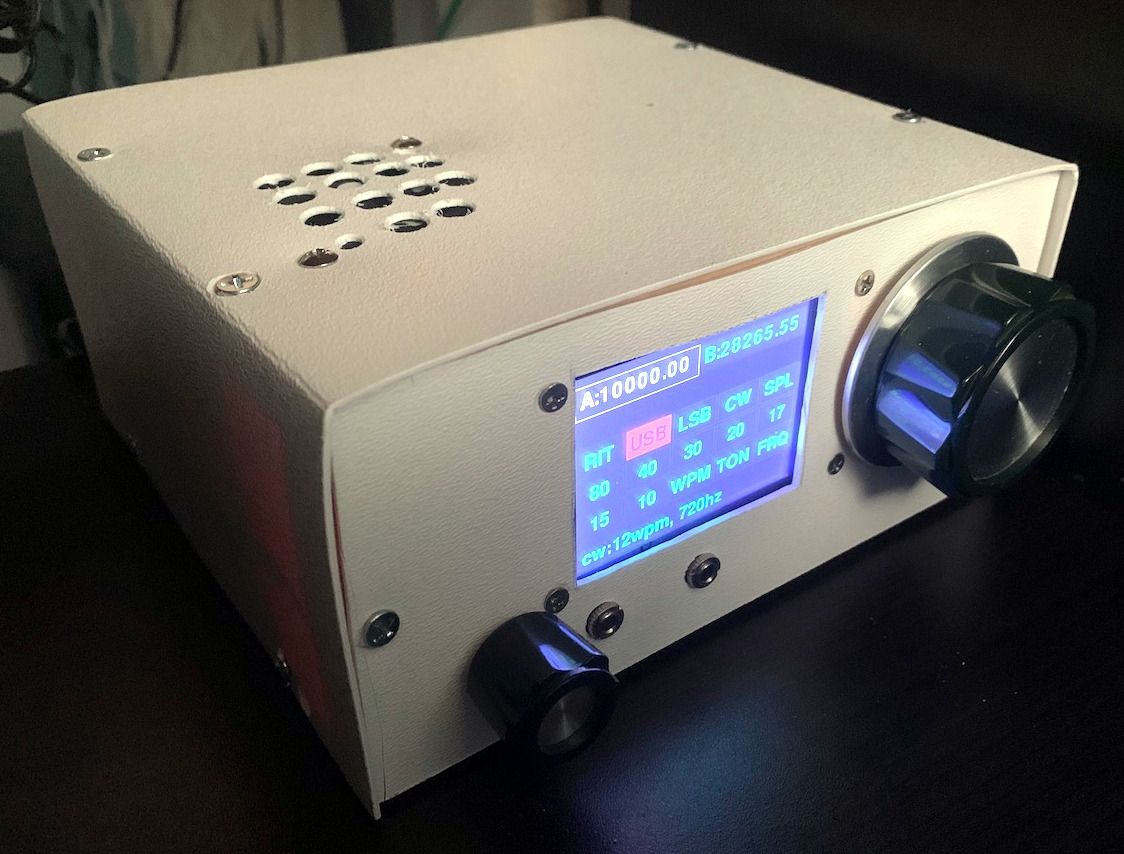
The HF Signals uBitX v6
with my custom shower-wall material enclosure
Hey everyone!
![]()
Around April of 2021 I became interested in HF Signal's uBitX v6 HF transceiver mostly (if not completely) designed by Ashhar Farhan. At that time, the bare-bones kit version (without the enclosure and speaker) was around $150 USD. I didn't have the disposable income to buy one outright although the $15 I had put into Bitcoin many years prior had blown up incredibly. The radio was ordered and received from India not too long afterward. Though purchased in 2021, I'm just now getting around to publishing a medium-long-term review in 2023. Sorry -- covid, moving and life in general.
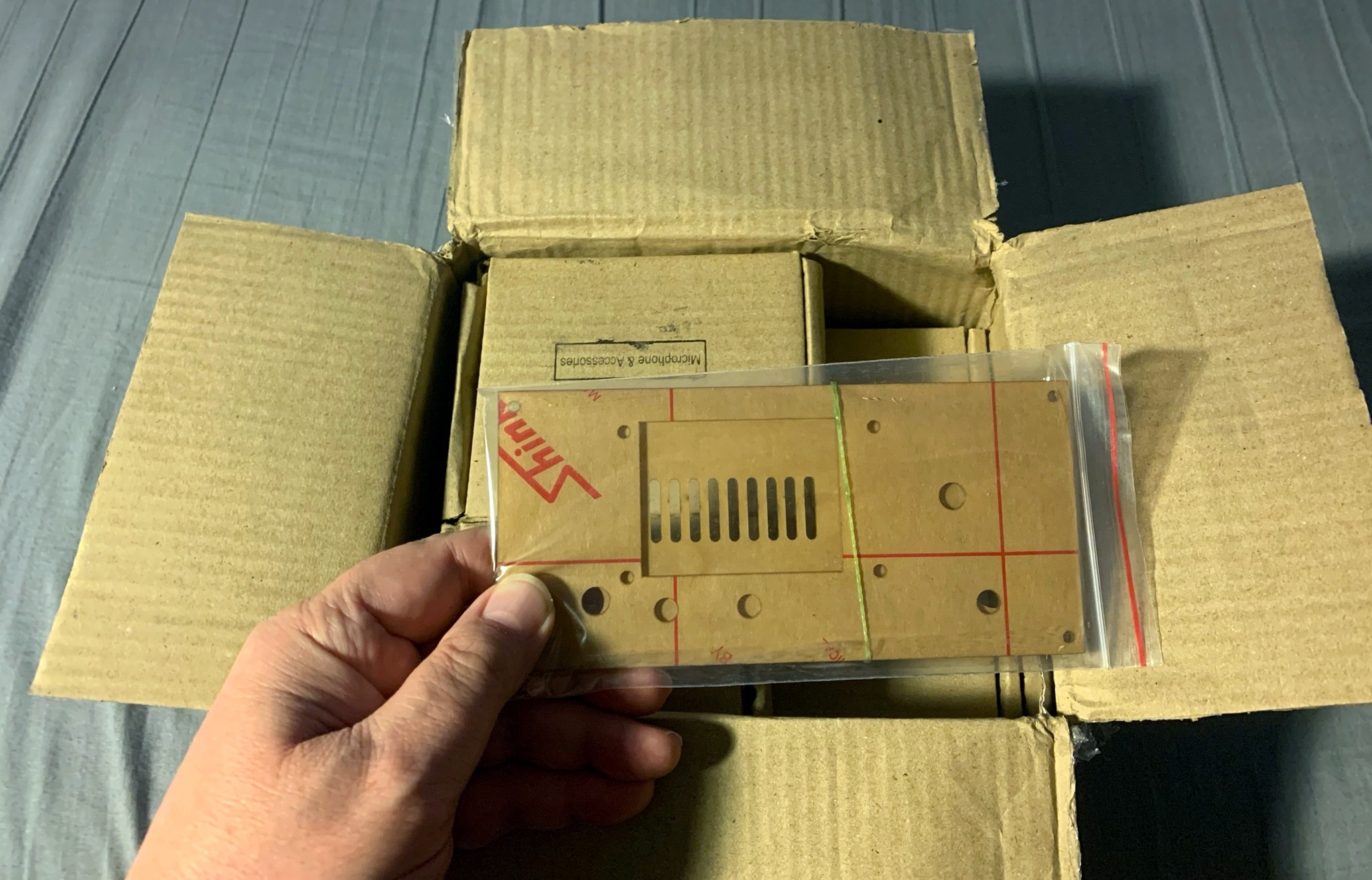
Unboxing the uBitX v6
Trim those nails dude!
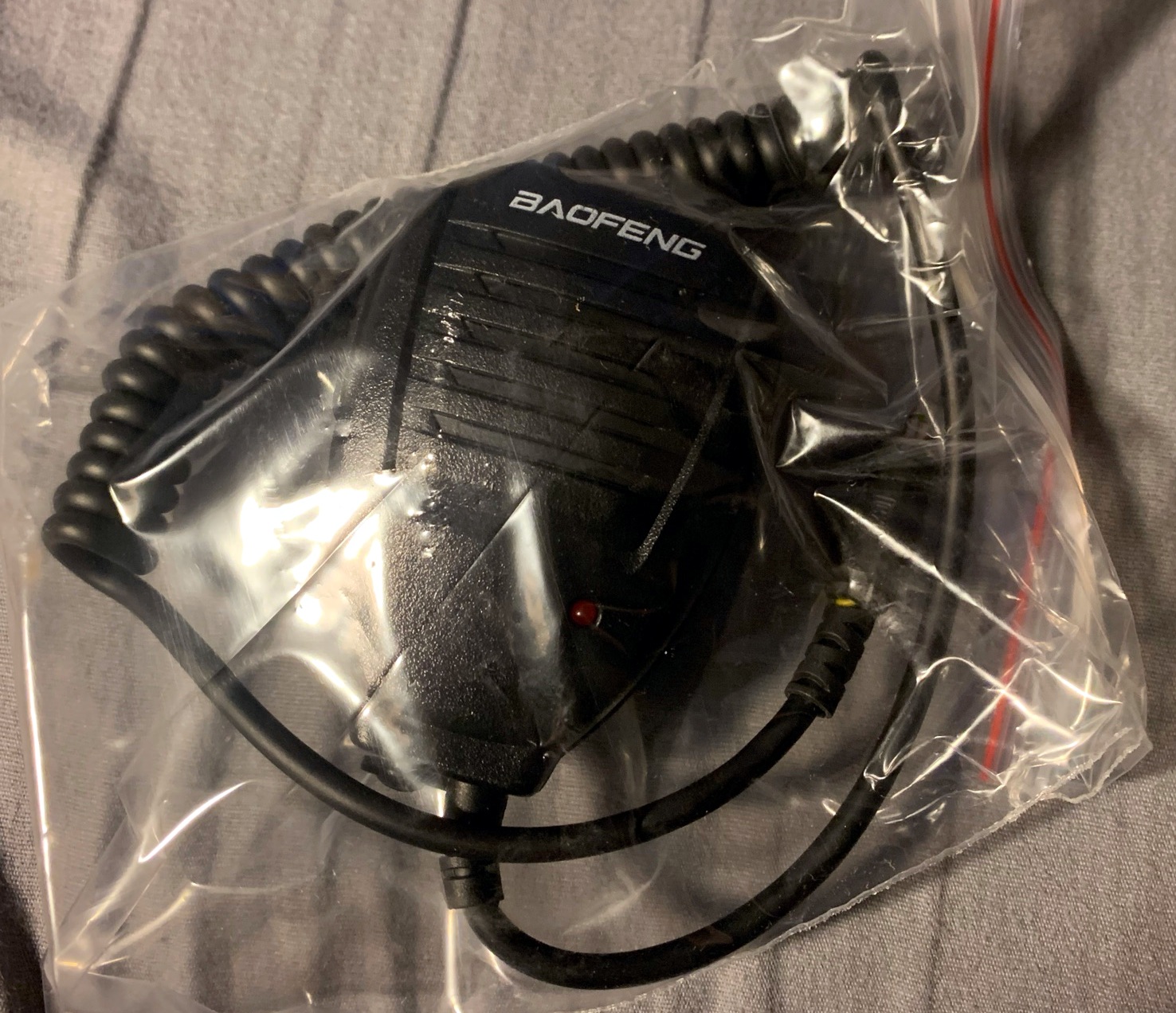
Baofeng microphone included with the kit
Assembly
The radio was sold as an easy-to-put-together kit consisting of the main radio
board, the Raduino (an RF generator and small touch-screen connected to an Arduino Nano
clone all on one board), an encoder for tuning, two knobs, a Baofeng(!?) custom-wired
microphone, a stylus for the touch-screen, cable assemblies, hardware for mounting and
two plexiglass pieces for the front and rear of the radio.
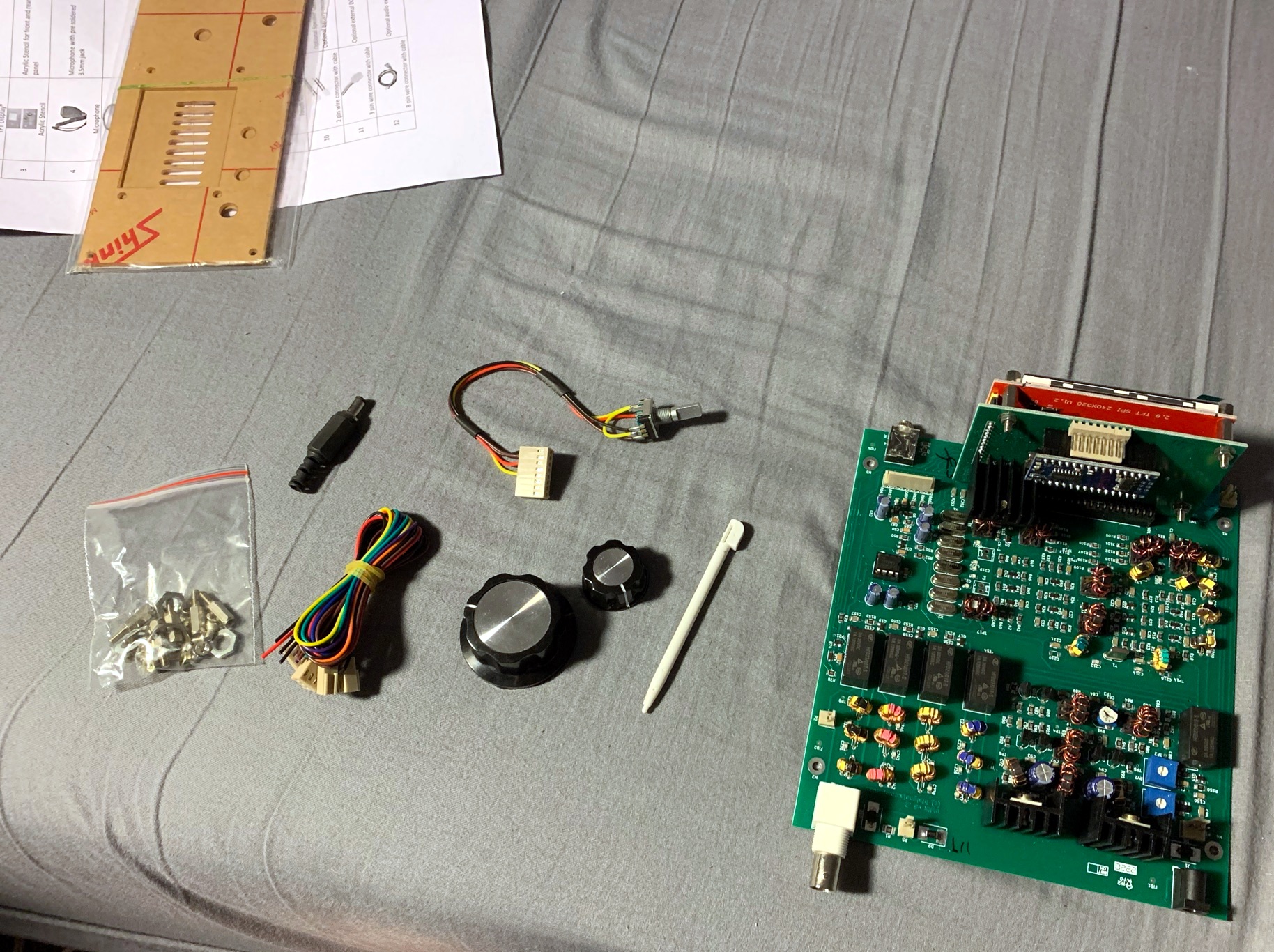
Most of the kit contents laid out
Everything went together very easily and there was only one minor issue: The included volume control knob would not fit the volume potentiometer shaft. It's possible they used a volume pot with a shorter shaft on my particular unit and hence the issue. I was a little disappointed because I don't have a huge inventory of modern knobs. I ended up removing the aluminum 'skirt' from a spare Heathkit knob I had and using it instead.
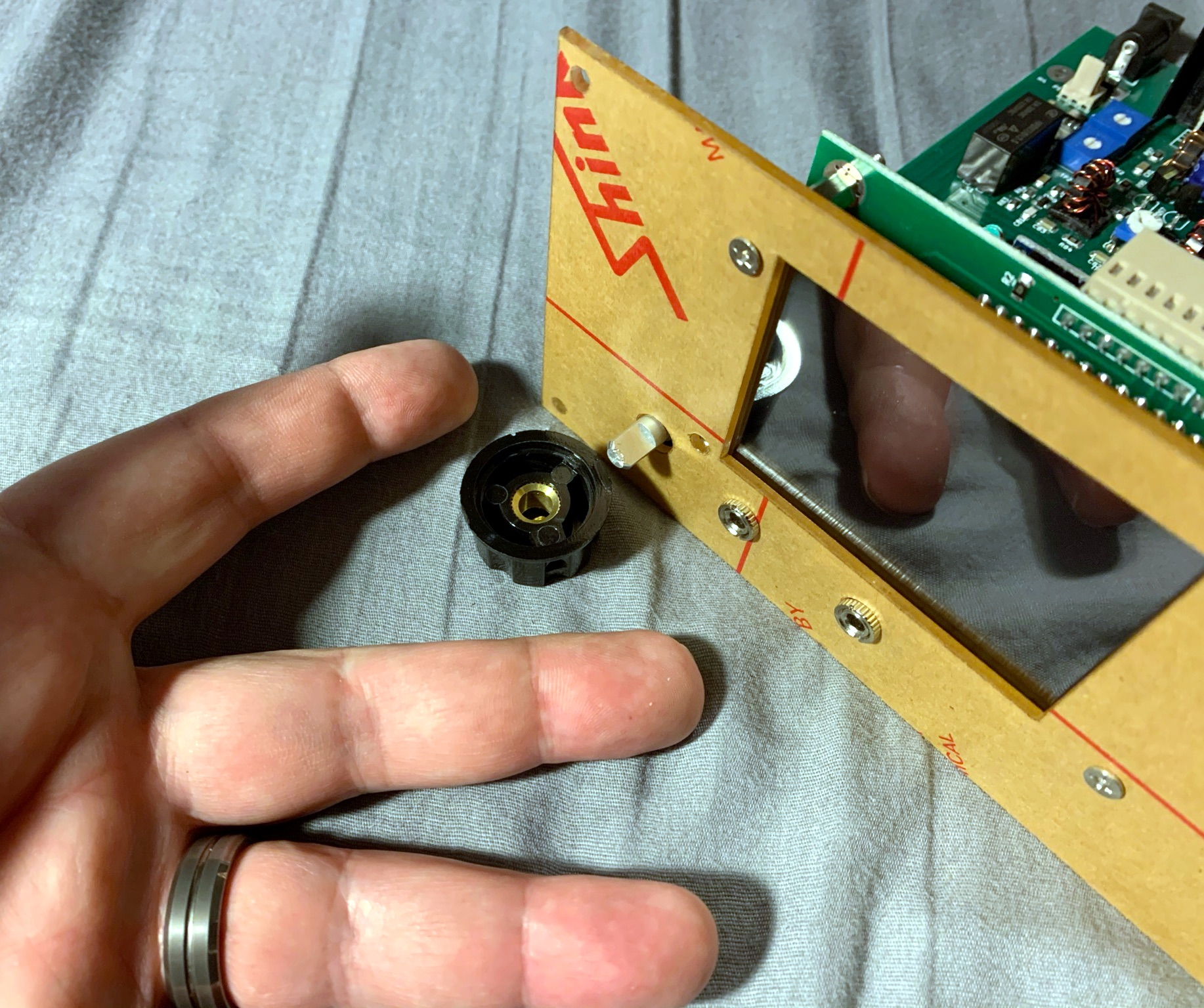
Volume knob didn't fit
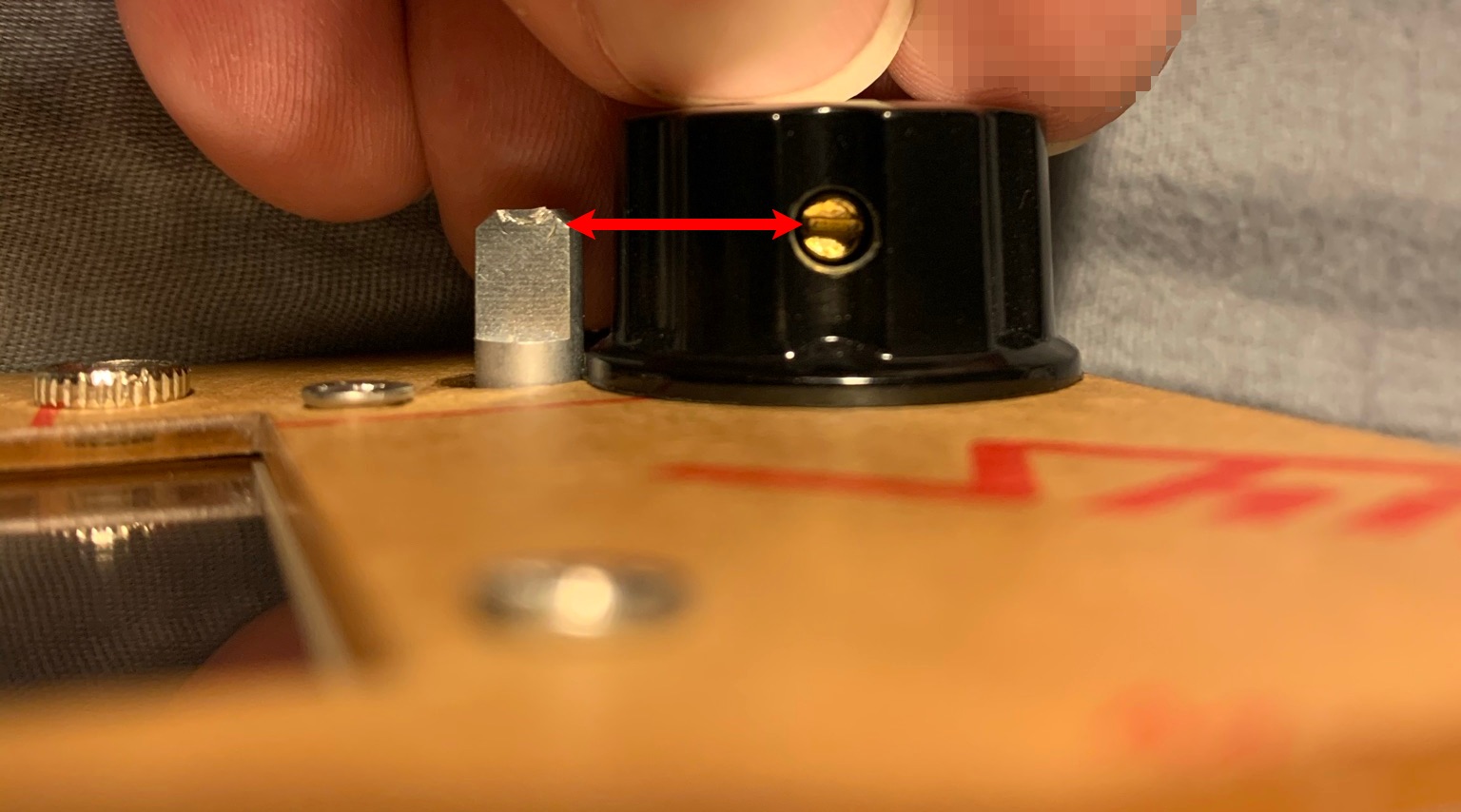
Volume pot shaft too short
The knob issue aside, everything else went swimmingly. I think there was a momentary "hmmm" moment where it was unclear which way the tuning encoder cable plugged into the Raduino but consulting pictures elsewhere I was able to figure it out. Before you know it, everything was put together and I was ready to power it on for the first time.
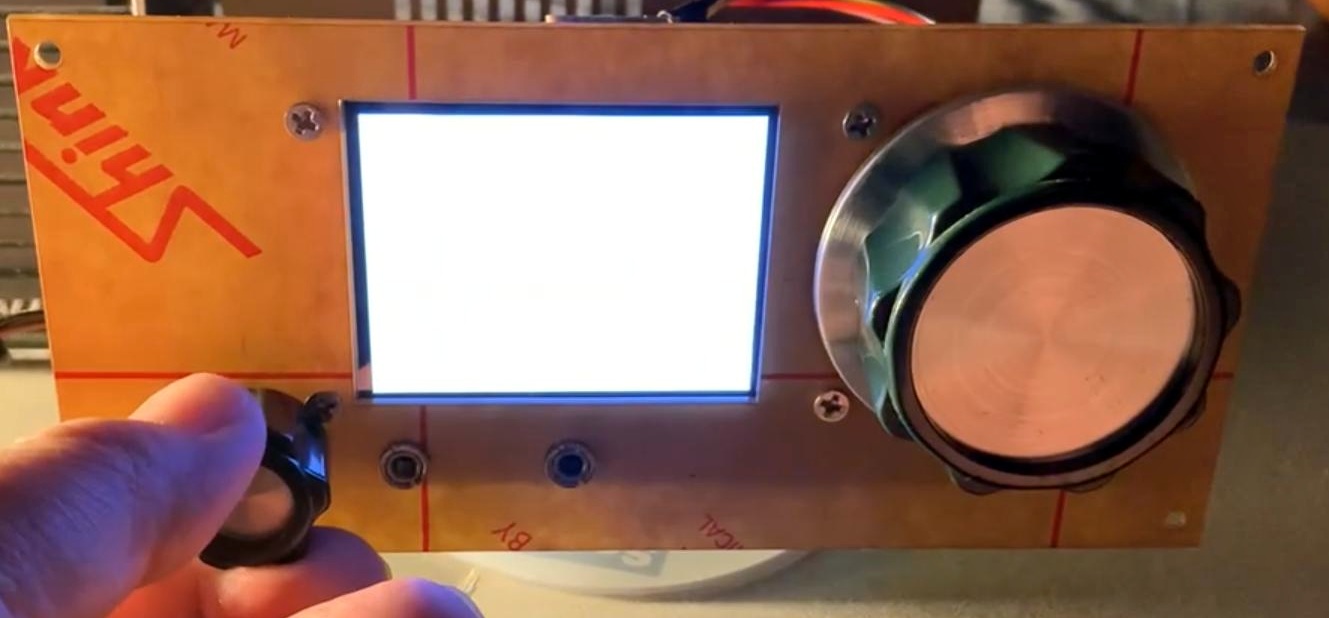
First power-up
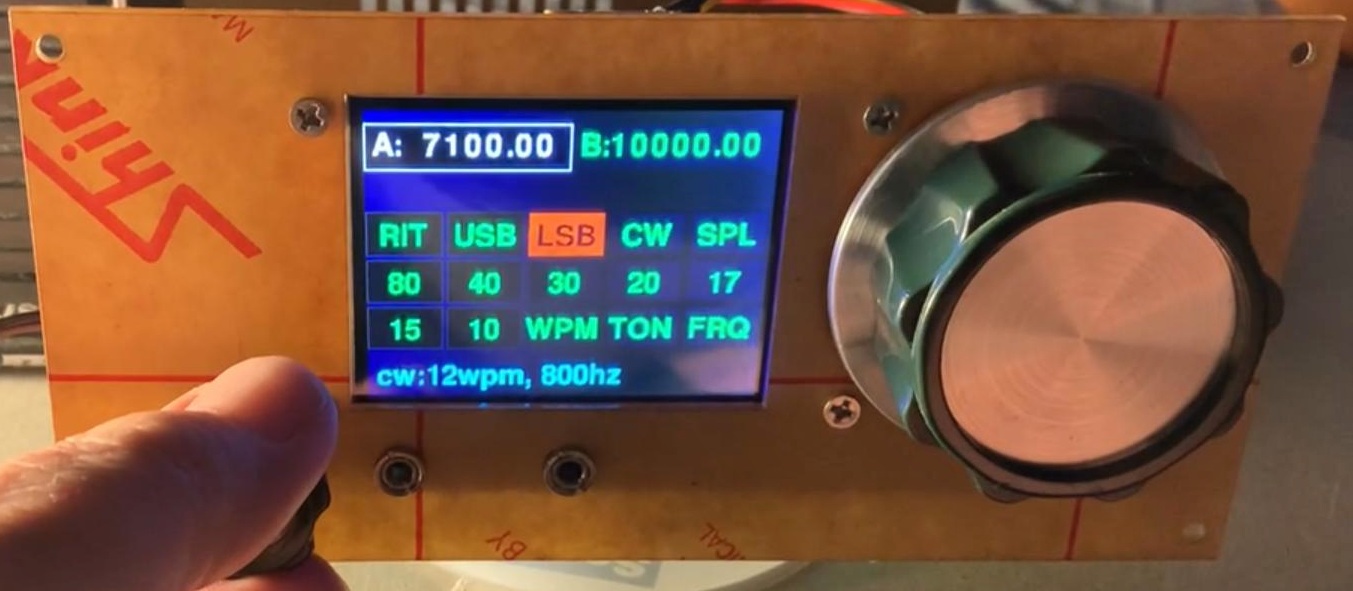
It's working!
Thankfully it powered up fine and there were no major issues! Next step was to build an enclosure for it to protect the various components from damage, minor spills, etc. Unfortunately I didn't document the enclosure building process but what you see at the top of this page is almost how it looks today except for the addition of a pot above the volume control to adjust or turn off the touch-screen's eyeball-burning default brightness. The enclosure is just made of square 'dowels', plastic material used for shower walls, glue and fasteners. Not super-robust but good enough for light indoors use.
Disclaimer
Some of my comments may frustrate HF Signals fans, Ashhar Farhan and the rest of his team.
I'm sorry. I admire Ashhar's engineering prowess, his friendliness and the support
he gives, but, at least in my particular instance, the user experience and functionality
of my uBitX v6 has not been very good.
Hackability
The one really cool thing about this radio is that you can download the source-code 'sketch'
that runs the on-board Arduino, hack it and, if you're not careful, brick your radio.
![]() But seriously, if you know what you're doing, you can do all sorts of cool and fun
things. As an open-source software developer, I'm constantly going over my code to
optimize it, find bugs and rearrange things so it's more logical. I tried to do the
same with Ashhar's original code; my results are below:
But seriously, if you know what you're doing, you can do all sorts of cool and fun
things. As an open-source software developer, I'm constantly going over my code to
optimize it, find bugs and rearrange things so it's more logical. I tried to do the
same with Ashhar's original code; my results are below:
The original colors used for the interface on the touch-screen were not to my liking, so I changed those. I also wanted a little nicer font, so I found out where in code to change that. (It's funny, the font I chose looks a little like the font used on the earlier Drake radios) Also there were issues with the original code where it would display a message or settings value on the screen which then partially corrupted nearby text and UI elements. I fixed those and sometimes added extra functionality to make it easier to use. Overall my changes are very subtle but make it just right for me and my tastes. Nice thing is, anyone can also download the code and change it to their own tastes.
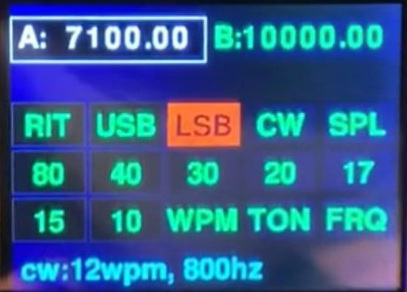
How the screen looked originally
Sorry, blurry still from video
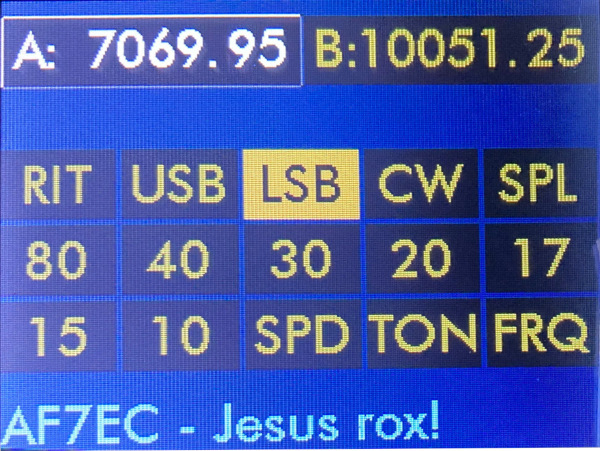
How the screen looks now
Usage
Before I started hacking on my radio, I used it (receive-only) for quite a while.
Almost immediately I was displeased with the birdies, spurs or whatever you want to
call them. On almost every band of interest the amount and strength of birdies was so
bad I could not hear some received signals behind them. I tried the BFO adjustment and
calibration several times, and it never fixed the problem. I posted about it on the
uBitX groups and was promptly scolded: "You should have known what you were getting
into before you bought the radio".
![]() Maybe other people just see something and buy it without really researching it, but I was
fully aware of what I was getting. I simply was asking if others were seeing this or if
it was something specific to my unit. I don't remember getting a direct and relevant
response to my question.
Maybe other people just see something and buy it without really researching it, but I was
fully aware of what I was getting. I simply was asking if others were seeing this or if
it was something specific to my unit. I don't remember getting a direct and relevant
response to my question.
Apologies for the pics below being blurry / bloomy. They are stills from video.
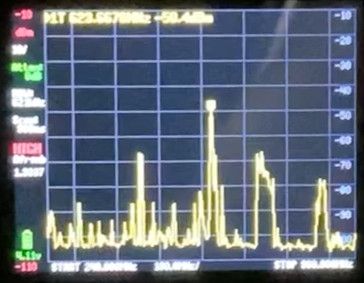
'High' input spectrum when uBitX v6 is off
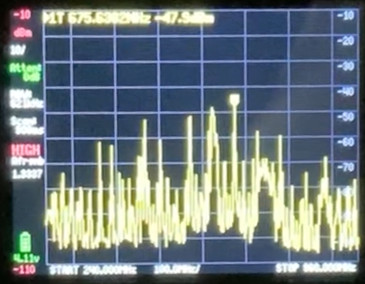
'High' input spectrum when uBitX v6 is on
Now I'm not a scientist and the only test equipment I have is an inexpensive multimeter and an original TinySA, but you don't even need lab-quality test equipment to see that the uBitX v6 generates a fair amount of ambient RF noise when running. One day I had my Baofeng UV-5R sitting about a foot or so away from the uBitX v6 and and when I powered the uBitX v6 the UV-5R's squelch opened and it wouldn't shut up until I moved quite some distance away.
I grabbed my TinySA and took video of the spectrum before and after the uBitX v6 was turned on (pics above), and it's obvious how much noise is being thrown out. Yes, the Baofeng has a pretty poor front-end but the TinySA is not lying -- there's noise all over the place. I believe I had aluminum shielding inside the plastic enclosure material at this time, so that should have helped. Plus clip-on ferrites all over the place too.
Transmit performance
As mentioned earlier, I don't have a lot of test gear, nor do I have a reliable antenna
analyzer, but I do have real-world results. Until yesterday, I could not transmit with
the uBitX v6 because: 1) I did not have a working transmit-worthy antenna until just a
month or so ago and 2) I couldn't find my 'big boy' power supply to give the radio what
it needs for transmitting.
After finding my powerful (switching) power supply and putting a good hash filter on it, I eagerly connected the uBitX v6 to it, tuned it with a decent antenna tuner and tried transmitting on 40, 20 and 15 meters while watching on various webSDR receivers that I know can receive my SW-3B just fine.
I quickly tried CW and it was so frustrating that that experiment ended quickly. The rest of the attempts were using SSB.
On 40 meters, though the antenna was tuned just fine the uBitX v6 would lock up and either stop transmitting or would keep transmitting seconds after I let off the microphone PTT button. Again, the antenna was tuned fine and the antenna tuner and antenna work fantastic with my SW-3B. Nothing was seen on the webSDR receiver.
On 20 meters the radio didn't misbehave but the output signal was awful on the webSDR receiver and pretty much same on 15 meters. Everyone else on those bands sounded and appeared fine.
Again, my SW-3B CW-only QRP three-band transceiver does great using the exact same antenna tuner and homebrew random-wire antenna. Maybe the uBitX v6 is more sensitive to feedline and antenna issues than the rock-solid SW-3B, but if that's the case, the uBitX v6 is not going to cut it in my shack. While I don't consider myself an appliance operator and I do enjoy homebrewing, I need a non-experimental radio I can actually use, especially on SSB.
Should you buy the uBitX v6?
Before I purchased my unit I did do my research, read the forums / groups and
watched videos about it. Some had great success with their units while others (like me)
had disappointing experiences. For something that only cost me around $15 USD out-of-pocket
plus the time needed for Bitcoin to make big gains, I can't complain about what I got. When I
bought cheap Chinese Pixies for around $5 USD I knew exactly what I was getting, same thing
with the uBitX v6.
If the uBitX v6 is still being sold, you have some good test gear, actually have a bench to tweak the radio, have an ideal resonant antenna and clean power supply and you want to be able to hack the radio's software, the money spent on a new uBitX v6 may be worth it, but just don't expect it to be your go-to radio without some serious limitations.
Pros
• Relatively inexpensive
• Hackable
• When not on a birdie, receive is clear and quiet
• Historically has been well-supported
• Ashhar Farhan seems like a nice guy
Cons (based on my unit)
• Eardrum-piercing birdies
• Stock software has some irritating issues
• Ambient RF noise may interfere with nearby radios
• Transmit performance is hit-and-miss
• CW operation is frustrating
• Xiegu and others have (arguably) more reliable radios for a little more money
Conclusion
HF Signals has released the sBitX v2 recently, and while it looks pretty neat, personally
I think I'm done with their line of radios, at least for now. When I purchased the uBitX v6
I really hoped that I'd have a more positive experience. I really wanted it to
be good enough for regular use, but as time went on, my hopes became dimmer and dimmer.
Here's hoping that someday HF Signals comes out with a killer product where their brand and
radios become well-known like Yaesu, Icom and Xiegu. Let's just hope the volume knob will
stay on, though.
![]()
God bless you, and thank you for reading!
![]()
Comments
(No comments yet)
